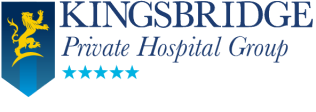Reaching The Finish Line With Physiotherapist Top Tips
08th, Sep 2022

Marathon training is an amazing journey! Whether you are new to running or have been running for most of your life, the satisfying feeling when you complete a run for the first time or you have reached a new distance is like no other.
With the Belfast City Marathon back in full swing this year alongside others, many will be training away to make sure they are ready to take on the challenge.
No matter what stage of running you are at, there are always things to consider. We spoke to Cathal O'Kane, Sports & Musculoskeletal Physiotherapist who offers his advice on reaching the finish line with the importance of warming up and cooling down, how to avoid an injury, recovery tips and what you should do if you experience an injury. Check them out below.
How important is warming up and cooling down after a run for injury prevention and performance?
In some sports it has been suggested that high levels of injuries may be due to a lack of knowledge regarding injury prevention or insufficient warm up procedures (Hawkins and Fuller 1999; Ekstrand et al, 2009). A trial by Soligard et al (2008) found that a structured warm up programme, developed by an expert group from FIFA, may reduce the risk of injury in young female footballers (n=1892) aged 13-17 years by about 33% and severe injuries by as much as 50%.
Currently, no such programme exists for runners and the topic of warm up is much more controversial.
A study by Van Mechlen et al (1993) found that there was no significant difference between runners in a control group (no warm up) and an intervention group (warm up) following 16-weeks of compliance with standardised warm up, cool down and stretching procedures. The researchers reported at the end of the 16-week period the ‘no warm up’ group had 23 injuries (4.9 injuries/1000 hours of running) in comparison to the ‘warm up’ group which had 26 injuries (5.5/1000 hours). At present there does not appear to be enough high-quality research to determine whether warm up helps prevent running injury or not (Fields et al, 2010).
For most runners a warm up is a very important way to both mentally and physically prepare for running. A study by Fradkin et al (2004) defined warm up as “a period of preparatory exercise in order to enhance subsequent competition or training performance.” Performance appears to be where runners may get most benefit from a warm up. A plyometric warm up involving squat jumps, scissor jumps and double leg bounds has been shown to improve running economy by 4-9% (Wei et al, 2020).
For a warm up to be successful runners should perform it consistently, keep it short and simple, make it specific to their needs and add some progressive plyometric exercises.
What are your top tips or advice for training to avoid injury?
It is believed that 60-70% of running injuries, if not even higher, can be attributed to training error (The Running Physio, 2020). The balance between external load (distance, speed, frequency etc) and tissue capacity plays a significant role in injury prevention. Sensible training structure with a planned, gradual progression and individualised strength and conditioning can be a powerful combination in preventing injury.
With this in mind planning and preparation for all levels of runner is key. Three essential areas for a runner to be aware of in term of preventing injury are:
1. Prehabilition Exercise / Strength & Conditioning
Ensuring you are robust enough to cope with demands of a running programme is essential. When runners visit our clinic, we have certain strength targets we would expect them to meet and if is not the case we would prescribe an individual programme to address their deficits. In a highly effective and successful training programme for runner’s time should be set aside for prehabilitation/strength and conditioning. Ideally this should be specific to the athlete, facilitated within the training week and completed on a long-term basis.
2. A Training Plan
No matter what level of runner you are there should be some thought surrounding an appropriate training programme for your goals. Often the biggest injury risk factor for runners in ‘too much too soon.’ A lot of runners start out with the belief that ‘more is better’ and that they must be pushing hard at all times. Seiler (2010) suggests approximately 80% of training volume should be low intensity and only 20% high intensity (e.g. Tempo runs and interval sessions). Doing more high-intensity exercise may not actually improve performance and may elevate injury risk. Having a structured training plan which is adaptable and allows time for the athlete to gradually build is more likely to be successful long term.
3. Planing Your Recovery
Although this is essential for effective injury prevention and performance this area is often overlooked by athletes with a busy life outside of their training schedule. (See below for further information).
For any athlete that has suffered an injury or is unsure how to programme their training or progress it in terms of strength and conditioning I would suggest having a look at our new Apex Athlete Programme.
What should runners do when they first feel a niggle or an injury?
Unfortunately, injuries and niggles are a common risk factor of running. Thankfully the benefits far outweigh the risks and fear of injury should not hold a runner back.
Studies in football suggest niggles may make you 3-6 times more likely to sustain an injury and miss playing time in the 7 days that follow (Whalan et al, 2019). Seasoned runners may be very comfortable with managing niggles and happy to adjust their training accordingly. Others may be unsure how to proceed and need further assistance.
In this scenario I would suggest speaking to a professional as quickly as possible to avoid large gaps in the training programme. Sometimes the reassurance that it is ok to continue or a very a simple adaption to the training plan can be enough to keep a runner on track.
What recovery tips would you suggest after running a marathon?
Athletes, even at the highest level spend more time recovering than they do training. However, particularly at amateur level, a huge emphasis is not placed on the role of recovery in performance and injury prevention.
Effective recovery strategies are vital after any sporting event to minimise soreness, risk of injury and to promote performance adaptions (Irish Women’s Hockey, 2022). These strategies are often complicated by the individual and the core components of recovery, and often the most convenient, are neglected. My advice would be to keep it simple and get the basics right, ideally getting these good habits in place long before the marathon arrives:
- Nutrition and hydration - ideally protein and carbohydrate rich foods within 30 minutes of the event and a balanced meal with 2 hours.
- Good quality sleep, aiming for > 8 hours. Limiting blue light and electronics at least one hour before bed.
- Active recovery strategies/mobility exercise. This can be specific to the individual and their preferences e.g. yoga, pool recovery.
When these foundations are in place other strategies such as ice baths, contrast baths, compression skins, massage etc. can be explored depending on availability and personal preference.
Do you recommend sports massage and how can this help?
In terms of the athletic population and runners there has not been a lot of research on massage. Massage is an ancient technique that can be traced back to early civilisations (Goats 1994; Callaghan, 1993; Crosman et al, 1984). The techniques are believed to have arisen from the natural intuitive desire to rub a painful injury (Goats, 1994). Its robust nature to withstand the test of time would suggest that the use of massage is based on solid scientific findings. However, current research trends suggest that it is difficult to support or reject the effectiveness of massage and arguments in 2022 remain conflicting.
Two points that provoke overwhelming agreement are the popularity of massage in sport and the consistent use of Swedish massage techniques over time. At the Atlanta games in 1996 it was reported that massage attributed to 47% of all treatment given to athletes from all sports (Ernst, 1998). Furthermore seven hundred and eighty seven massages were carried out on the UK team alone at the Barcelona Olympics in 1992 (Callaghan, 1993).
Massage possibly has a role as an adjunct to the core recovery strategies we discussed previously. If the runner attempts to eat well, sleep and perform some form of active recovery and then feels a massage would be of benefit to them I would say this is appropriate. If the runner neglects the core recovery strategies and feels massage will be sufficient on its own, then I would question the longevity of this approach in terms of performance and injury prevention.
What treatments are available at Kingsbridge Physiotherapy Clinic if you have suffered a running injury?
At the clinic we manage a large number of running related injuries on a regular basis. Our work with Queen’s University Elite Athlete Programme exposes us to some of the top young athletes in the country and constantly challenges our thinking in terms of the best way to keep athletes performing at the highest level. Some of our most enjoyable work is often with clients who have just started running and are maybe trying to work their way through a couch to 5k. Regardless of the goal when someone attends the clinic we will spend time getting to understand their injury, their training history and what they want to achieve moving forward. We will then create a plan together to decide what is the best way forward for the client.
At the clinic we have the added benefit of our testing equipment which gives us a more accurate measure of the client’s abilities:
- Forcedecks to analyse balance, strength and movement strategies in a range of exercises and jumps.
- NordBord to accurately monitor an athlete’s hamstring strength and imbalance.
- Dartfish - a running analysis software.
In terms of other treatment options, we have Shockwave Therapy which is a modern treatment tool often used in the management of tendon pain.
Our new partnership with the Health & Recovery Hub provides patients with a way to get back to activity sooner than expected post injury or to enhance those active recovery strategies we discussed earlier.
Get in touch!
So, whether you are new to the sport or a keen runner, if you would like to get the most out of your recovery or would like to improve upon your skills and performance, please do not hesitate to get in touch!
Email physio@kingsbridgehealthcaregroup.com or visit kingsbridgephysiotherapyclinic.com for further information on our physiotherapists, services and treatments available.
Recent Articles

